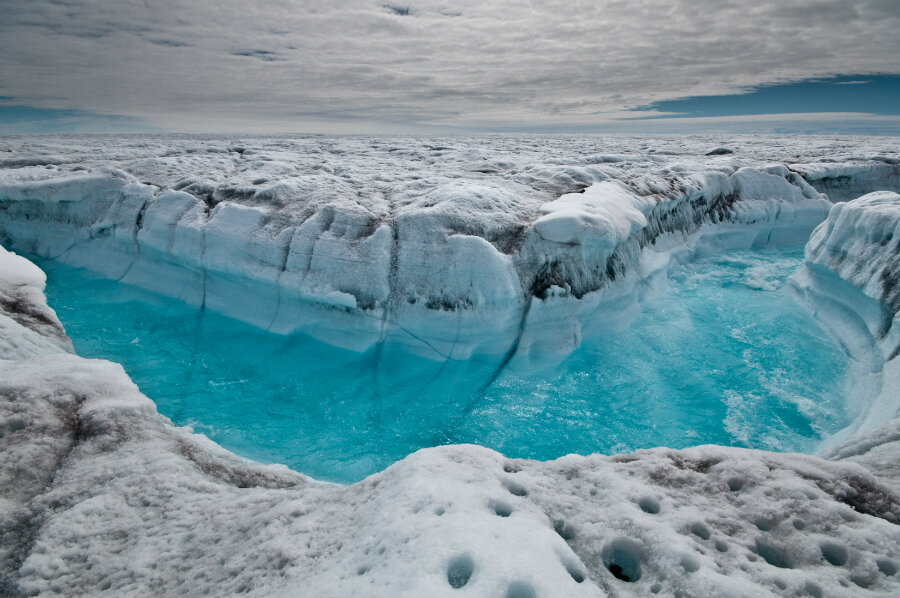How to deal with toxic waste buried in Greenland's rapidly melting ice caps
Loading...
Climate change is bringing a lot of first-time environmental challenges, as well as many unprecedented political challenges.
And one such climate change challenge could be particularly political.
Greenland's ice sheet is melting at a rapid pace. According to a new study published Wednesday in the journal Geophysical Research Letters, this significant snow and ice loss could cause buried toxic waste to resurface unexpectedly.
Camp Century was a US military base built on and under the Greenland ice sheet in 1959 to test nuclear missiles during the height of the cold war. But the United States decommissioned the military base in 1967, leaving behind the various waste from a nuclear reactor such as gasoline, sewage, and radioactive coolant. The US, along with Denmark who controlled Greenland at the time, did not think much of the buried waste, assuming continual snowfall would only bury the remnants deeper.
But now scientists say the waste, which is currently about 115 feet below the surface of the ice, will resurface in as little as 75 years.
"Our study highlights that Camp Century now possesses unanticipated political significance in light of anthropogenic climate change," the paper’s authors write. "The potential remobilization of wastes that were previously regarded as properly sequestered, or preserved for eternity, is an instance, possibly the first, of a potentially new pathway to political dispute associated with climate change."
Now, as study lead author William Colgan told Smithsonian magazine, “We’ve gone from ‘eternity’ to ‘we really need to start thinking about this.’ ”
When the toxic remnants are exposed to the open ocean, surrounding ecosystems will likely suffer devastating consequences. And while removing the waste is necessary, the process will also be extremely costly.
Political disputes may occur when deciding who holds the responsibility to pursue the expensive clean-up project. While the US constructed Camp Century, Denmark permitted the project, and Greenland is now an autonomous territory.
“The study identifies a big hole in the extant set of laws and rules we have to deal with environmental problems globally,” Jessica Green, a political scientist specializing in international environmental law at New York University who was not part of the study, said in a press release.
Recent studies have noted an exponential rate of ice loss in Greenland, worrying scientists.
Significant ice melt came early to Greenland in 2016, as The Christian Science Monitor reported earlier this year. Based on models from the Danish Meteorological Institute, one day in April saw average temperatures between 41 and 50 degrees Fahrenheit, causing more than 12 percent of the ice sheet to lose at least one millimeter of ice.
"This would be a warm day in July, never mind April," Robert Fausto, a scientist with the Geological Survey of Denmark and Greenland, said at the time.
Before this year, the three earliest days for ice melt more than 10 percent occurred in the month of May. This recent melt broke the most recent 2010 record by almost a month.
And with record melts like these, scientists are confident Camp Century’s waste will resurface.
"Climate change is thus likely to amplify political disputes associated with abandoned wastes in a variety of settings," write the authors. "In this context, the shifting fate of abandoned ice sheet military bases under climate change may provide a microcosm through which to examine the multinational and multigenerational challenges presented by climate change."
[Editor's note: This report has been changed to reflect Greenland's status as an autonomous territory.]






